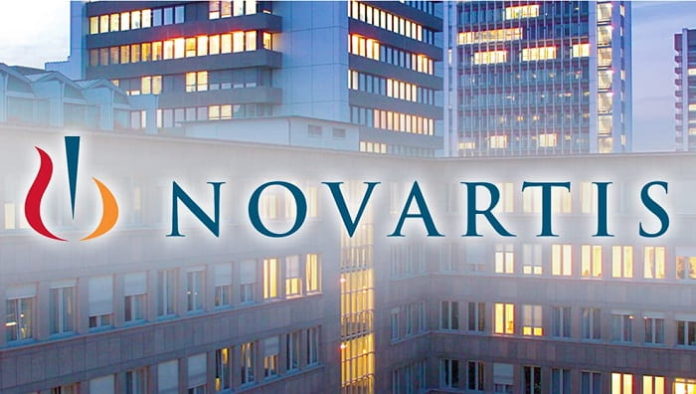Novartis announced new data that reinforce the transformational benefit of Zolgensma (onasemnogene abeparvovec), an essential one-time treatment for spinal muscular atrophy (SMA). The overall safety profile remains favorable following presymptomatic treatment, in the long-term follow-up period from clinical studies and in the real-world setting. These data were presented during the 2021 Muscular Dystrophy Association (MDA) Virtual Clinical and Scientific Conference.
New data underscore the critical importance of identifying and treating SMA as early as possible. In contrast to the natural history of this devastating disease, which leads to progressive and irreversible loss of motor function, children treated with Zolgensma presymptomatically in the phase 3 SPR1NT trial achieved age-appropriate motor milestones within the World Health Organization (WHO) window of normal development – including sitting, standing and walking – were able to eat exclusively by mouth and did not require ventilatory support of any kind. There were no serious, treatment-related adverse events reported in SPR1NT. In addition, children identified via newborn screening enrolled in the RESTORE real-world registry were significantly less likely to receive more than one SMA therapy compared with those who were diagnosed clinically.
“Without the benefit of disease-modifying therapy, newborns with biallelic SMN1 deletions and two or three copies of SMN2 would normally develop SMA Type 1 and SMA Type 2, respectively. When treated with Zolgensma prior to the onset of symptoms, children in the SPR1NT trial achieved milestones like sitting, standing and walking at an appropriate age, grew as expected without nutritional assistance, and remained free of all forms of mechanical ventilatory support,” said Kevin Strauss, M.D., medical director, Clinic for Special Children in Pennsylvania. “This stands in sharp contrast to the natural progression of SMA Type 1, which would otherwise render them helpless within the first year of life and unable to swallow, breathe, or survive without mechanical support. The transformative benefit of early intervention, as seen in SPR1NT, further underscores the urgent need for newborn screening.”
Long-term follow-up data from two studies continued to demonstrate that children treated with Zolgensma experienced a sustained benefit from gene therapy in the years following dosing, with no evidence of new or delayed safety signals. Zolgensma led to achievement of new milestones years after treatment – including sitting – with sustained durability in children now up to six years old and more than five years post-treatment.
Emerging findings from the RESTORE registry – designed to provide real-world data for enhancing our understanding of patients cared for in routine practice – indicate older children (=6 months) achieved a clinically meaningful benefit when treated with Zolgensma alone, after switching to gene therapy or in combination with another SMA therapy, with safety events consistent with the previously described safety profile. Nearly all children with two or more CHOP INTEND assessments available improved or maintained their scores, and most had a clinically meaningful =4-point increase.
According to Shephard Mpofu, M.D., SVP, chief medical officer, Novartis Gene Therapies, “With more than 1,000 patients now treated, these data presented at MDA further reinforce what we’ve come to expect from Zolgensma – consistent, significant and clinically meaningful therapeutic benefit in SMA, including prolonged event-free survival, achievement of motor milestones unseen in natural history of the disease, and durability now more than five years post-dosing.”
SPR1NT is an ongoing phase 3, open-label, single-arm, multi-center trial designed to evaluate the efficacy and safety of a one-time IV infusion of Zolgensma in presymptomatic patients with a genetic diagnosis of SMA and two or three copies of SMN2 who are =6 weeks of age. The majority of patients with two copies of SMN2 develop SMA Type 1, the most common form accounting for 60 percent of cases. Patients with SMA Type 1 will never sit unassisted and, when left untreated, SMA Type 1 leads to death or permanent ventilation by the age of two in the majority of cases. Most patients (>80 per cent) with three copies of SMN2 develop SMA Type 2. According to natural history, patients with SMA Type 2 never walk.
Across the two-copy and three-copy cohorts, all patients (100 per cent) were alive and free of ventilatory support of any kind. All patients (100 per cent) fed orally and did not require feeding tube support of any kind. According to natural history, 60 percent of two-copy patients would require feeding support by 15 months.
Zolgensma (onasemnogene abeparvovec) is the only gene therapy for spinal muscular atrophy (SMA) and the only SMA treatment designed to directly address the genetic root cause of the disease by replacing the function of the missing or non-working SMN gene to halt disease progression through sustained SMN protein expression with a single, one-time IV infusion. Zolgensma represents the first approved therapeutic in Novartis Gene Therapies’ proprietary platform to treat rare, monogenic diseases using gene therapy. Zolgensma was approved in the US in May 2019 and subsequently has been approved in 38 countries. To date, more than 1,000 patients have been treated with Zolgensma across clinical trials, managed access programs, and in the commercial setting.
Novartis Gene Therapies has an exclusive, worldwide license with Nationwide Children’s Hospital to both the intravenous and intrathecal delivery of AAV9 gene therapy for the treatment of all types of SMA; has an exclusive, worldwide license from REGENXBIO for any recombinant AAV vector in its intellectual property portfolio for the in vivo gene therapy treatment of SMA in humans; an exclusive, worldwide licensing agreement with Généthon for in vivo delivery of AAV9 vector into the central nervous system for the treatment of SMA; and a non-exclusive, worldwide license agreement with AskBio for the use of its self-complementary DNA technology for the treatment of SMA.
SMA is the leading genetic cause of infant death. If left untreated, SMA Type 1 leads to death or the need for permanent ventilation by the age of two in more than 90% of cases. SMA is a rare, genetic neuromuscular disease caused by a lack of a functional SMN1 gene, resulting in the rapid and irreversible loss of motor neurons, affecting muscle functions, including breathing, swallowing and basic movement. It is imperative to diagnose SMA and begin treatment, including proactive supportive care, as early as possible to halt irreversible motor neuron loss and disease progression. This is especially critical in SMA Type 1, where motor neuron degeneration starts before birth and escalates quickly. Loss of motor neurons cannot be reversed, so SMA patients with symptoms at the time of treatment will likely require some supportive respiratory, nutritional and/or musculoskeletal care to maximize functional abilities. More than 30% of patients with SMA Type 2 will die by age 25.
Novartis Gene Therapies (formerly AveXis) is reimagining medicine to transform the lives of people living with rare genetic diseases. Utilizing cutting-edge technology, we are working to turn promising gene therapies into proven treatments, beginning with our transformative gene therapy for spinal muscular atrophy (SMA). This therapy is now approved in the United States, European Union, Japan, Brazil, Israel, Canada, Taiwan and Australia, and additional registrations are being pursued in close to three dozen countries, with regulatory decisions anticipated in Switzerland, Argentina and South Korea in early 2021. Our robust AAV-based pipeline is advancing treatments for Rett syndrome and Friedreich’s ataxia. We are powered by the world’s largest gene therapy manufacturing footprint of more than one million square feet, enabling us to bring gene therapy to patients around the world at quality and scale.






















